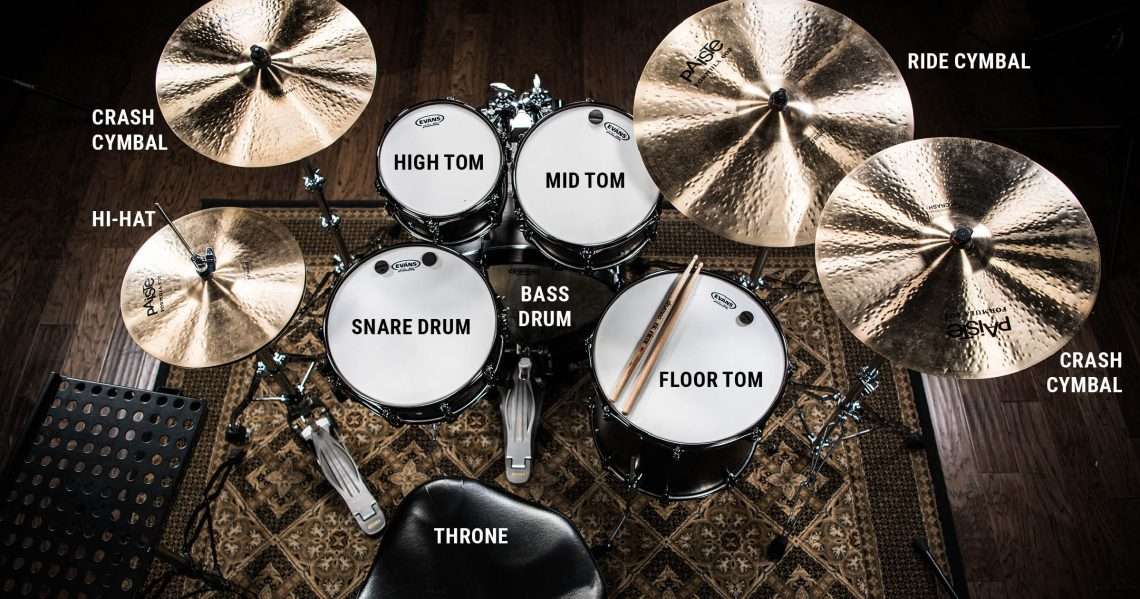
Which drums to choose?
See Acoustic drums in the Muzyczny.pl store See Electronic drums in the Muzyczny.pl store
Choosing the right kit is a key issue in our further adventure with drums. Currently, we have many manufacturers on the market who offer sets of the so-called sets in various configurations. When deciding to buy an instrument, the choice should be made primarily in terms of the musical genre we play or what we intend to play. What kind of music we are going to perform and what sound we want to get should be our priority when making decisions. There is no quality of strictly defined top-down arrangements that this set is for jazz and the other is for rock. Even if manufacturers use such references in their descriptions or names, it is rather for purely marketing purposes. The choice of a given set depends primarily on our individual sonic preferences.
There are several factors that contribute to the sound of a set. The basic ones include the size of the tom-toms in our set, the material from which the bodies were made, the strings used and, of course, the outfit. At the beginning, I suggest focusing on the size of individual cauldrons, because it will depend on what sound we can get from them. Each basic drum kit should have several drums: snare drum, toms, floor toms, and a kick drum. The snare drum is one of the most characteristic drum of the whole set, thanks to the fact that there are springs mounted on the lower diaphragm, which create a characteristic sound resembling a machine gun. The sizes of the snare drums, as well as the other drums, are different. The most popular size is a 14 ” diaphragm diameter and 5,5 ” deep. Such a standard size allows for a very versatile and universal use of a snare drum, which will work well in any musical genre. We can also find deeper snare drums with a depth of 6 to 8 inches. It should be noted here that the deeper the snare drum, the louder and more resonant the sound will be. We also have a choice of snare drums with a smaller diaphragm diameter, including 12 and 13 inches, the so-called piccolo which are 3-4 inches deep. Such snare drums sound much higher and are most often used in jazz music, where the whole set is tuned quite high. You have to remember that the smaller the diameter of a given drum, the higher its sound will be. So to sum up this, the depth of the drum is mainly responsible for the loudness, and the midrange is responsible for the pitch of the sound. We said to ourselves at the outset that the material also has a very significant influence on the sound of our instrument. We can have wooden or metal snare drums. Wooden snare drums are most often made of birch, maple or mahogany and the sound of such a snare is usually warmer and fuller than a metal snare, which is usually made of steel, copper or brass. Metal snare drums are sharper and usually louder.
Kettles, the so-called the volumes are usually mounted on special holders or on the frame. The most common sizes are 12 and 13 inches in the case of small toms and 16 inches in the case of floor tom, i.e. a well standing on legs on the drummer’s right side. For those who like high-sounding drums, I suggest buying cauldrons with a smaller diameter, e.g. 8 and 10 inches or 10 and 12 inches, and a 14-inch well and an 18 or 20-inch control panel. People who prefer low-sounding sets can calmly choose toms in the diaphragm sizes of 12-14 inches with a 16 or 17-inch well and a central drum, also called a bass drum, in the size of 22 – 24 inches. Usually, large drums are most used in rock music, while the smaller ones in jazz or blues music, but this is not a rule.
It should also be remembered that the type of tension and its tension force are decisive for the achieved sound of the instrument. The more we stretch the diaphragms, the higher the sound we get. Remember that each drum has a top and bottom diaphragm. It is through the appropriate stretching of the membranes that will depend on the height, attack and sound of a given element of our set. It is certainly not easy for a beginner to make the right choice, so I advise beginner drummers to listen to various recordings of their favorite drummers and look for the sound that you like the most. If you know what sound you want to achieve, it will be easier for you to search for the right set.





